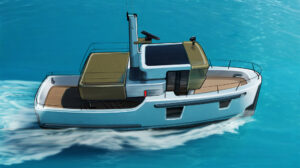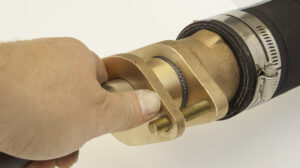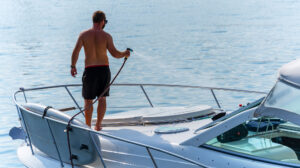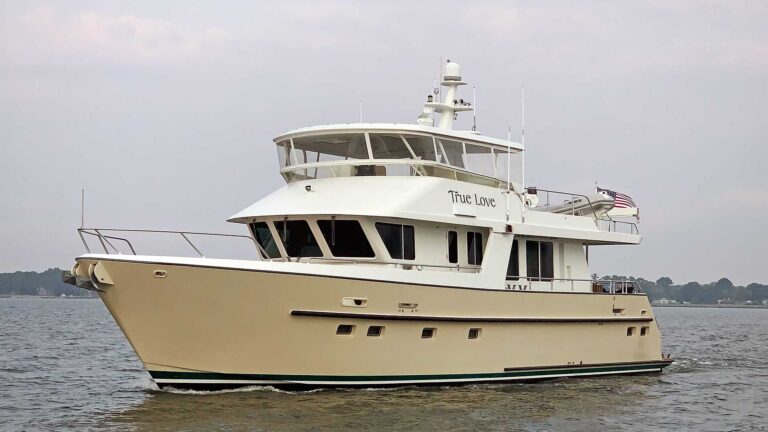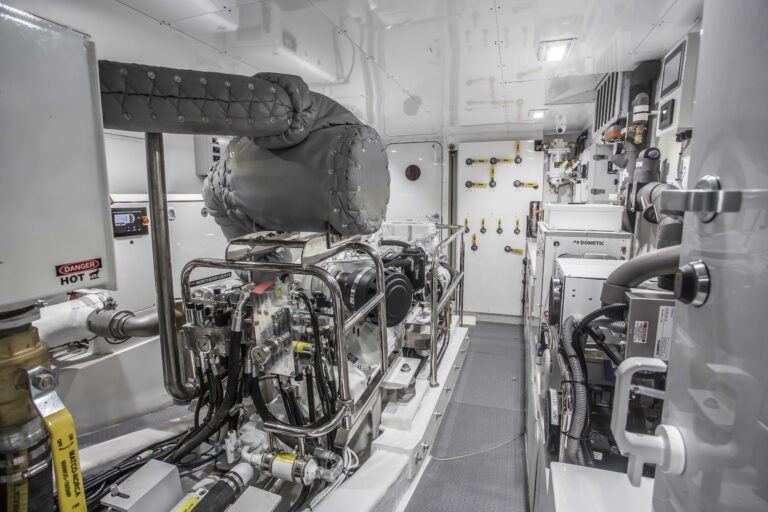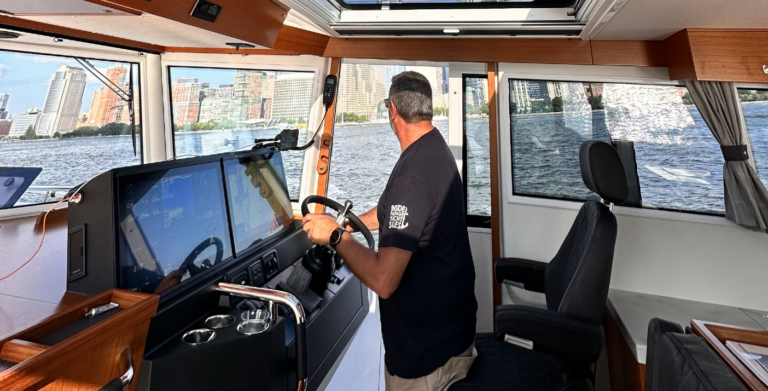Imagine if you could generate surplus 120VAC or 12/24VDC electricity whenever your propulsion engine was running. Furthermore, what if you could do it with a virtually maintenance-free design that required no gears, belts, or brushes to lubricate, adjust, or wear out? There is a way and its called a flywheel or transmission generator.
A few years ago, while on assignment for PMM, I cruised aboard an ice class eco-cruise ship, the MV Endeavour (you can read the entire article entitled, Big Ship, Little Ship, in the PMM August 03 issue). Built in Germany in the early 1960s originally as a factory fishing vessel designed to operate year-round in waters around Greenland, she was mechanically capable and seaworthy. Of the many fascinating features she possessed, one was of particular interest: Both engines were equipped with shaft or flywheel generators, each one of which was capable of supplying enough power to handle all of the ships electrical needs, several hundred megawatts. When the ship was used for factory fishing, it carried a huge refrigeration plant. Redundancy was built in by installing a generator on each engine, either one of which could keep the catch frozen.
The approach of using the propulsion engines as generators is nothing new and considering the Endeavour was built in one of the same yards that built WWII U-boats, which, along with most diesel-powered submarines, used a similar system for charging batteries while running on the surface, its not surprising this approach was taken.
I wondered, as I watched those shaft generators whirring away, producing all that electricity, why a similar system didnt exist for small, recreational vessels. That is, until now. As I walked through the exhibit hall at the Miami Boat Show, I came across two such systems. The first is manufactured by an Austrian company called Steyr Motors. Theyve been building diesel engines since the 1920s. Their system, the IFG, which stands for Integrated Flywheel Generator, is a 12-inch-long sandwich that is placed between the engine and the transmission. Using a brushless stator and rotor arrangement, very much like an ordinary generator, it produces approximately 5kW of DC power at 14 or 28 volts (two models are available). They then offer designs that include an inverter installation which converts this DC output to conventional shorepower-like 120/230VAC power, again, at 5kW.
This means that a variety of AC appliances such as microwave ovens, toasters, coffee makers, and even air conditioning could be operated using the IFG. A charge control unit, or CCU, regulates the immediate DC output of the IFG, which is sent directly to the house batteries. Inverters are then installed as they normally would be, to these same batteries. While the AC power output thats derived from the batteries via the inverter is constant, that is, the voltage does not vary with engine speed, the DC output of the IFG does. For the 12-volt model, its output peaks at about 1500 rpm. The 24-volt model requires a bit more speed; it produces 5kW at approximately 2200 rpm (the 12-volt version maxes out at about 4.3kW).
So, whats not to like about the IFG? Only one thing, really: For the foreseeable future its only available with Steyr engines. While theres much to like about Steyrs, they arent very popular or well supported in the United States and they do use an unusual, although well-engineered (its been around since the 1920s) mono-block designthe cylinder head is not separate from the block and is thus not removable. For more information, or to encourage them to offer an aftermarket version, visit Steyr at steyr-motors.com.
The other flywheel generator I noticed at the Miami Show was displayed by a company called Tuff Torq. As it turns out, Tuff Torq is part of the Kanzaki Group, which makes transmissions for many Yanmar engines. Tuff Torq had a flywheel generator unit on display; however, curiously, they had no literature or information on the product. As someone who has attended many boat shows as an exhibitor, all I could think was, why bring something you arent going to sell or market? After making some calls I discovered why. The product, called a KMG65, is currently marketed by Yanmar exclusively, at the time of this writing, in Europe. Youll see why in a moment. Its output, depending upon the model, is either 3.2kW or 6.4kW at 230 volts, 50Hz AC. Thats right, 230 volts 50 hertz, which means its not compatible with boats or appliances wired for U.S. 120/240VAC 60Hz.
The Yanmar unit remains impressive nevertheless. Its output is designed strictly as AC, the wiring from the generator leads directly to one or two power boxes that are supplied with the generator. They convert the output to 230VAC. Unlike the Steyr IFG, its strictly an AC package. The generators weight ranges from 46 to 45 pounds, depending upon the model, while the power boxes weigh 29 pounds and, again, youll need two for the full 6.4kW output. At the moment its designed to be used only with the 3JH and 4JH model engines. The power boxes are roughly the same size as a 1.5kW inverter/charger. If youd like to learn more about this product, or to encourage Yanmar to market it in a U.S. model, visit them at yanmarmarine.com or Google Yanmar KMG65.
Theres one more entrant in the flywheel generator category, its from Nanni Diesel. Based in France and Italy, Nanni Diesel, which has a U.S. distributor network, offers a flywheel generator that works on the same principles as the above units, also in 230-volt output. Although their English website contains no information about the flywheel generator, it is nannidiesel.com.
Im hopeful that these manufacturers will see the benefit of introducing this product in the United States. Flywheel generators could present a viable option, or offer redundancy, to the stand-alone generator or high-output alternator.



